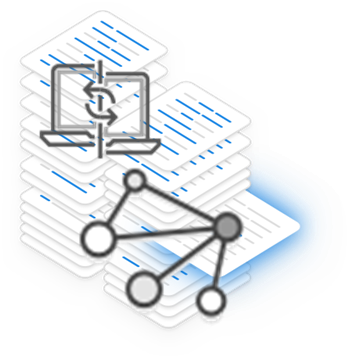Leveraging the cloud | Financial Market Data Accelerate to the Cloud
Dr. Evangelo Damigos; PhD | Head of Digital Futures Research Desk
- Cloud
- Competitive Differentiation
Publication | Update: Sep 2020

The cloud storage market, led by tech giants such as Google, Microsoft and Amazon, is expected to triple in value to over $ 100 billion annually by 2024, according to a report by Market Data Forecast.
The world’s major stock and derivative exchanges are moving into the cloud, likely to meet client demand. According to research by Greenwich Associates, some 93% of market data professionals say they are planning to use the cloud to help manage their data.
Start-ups leveraging the cloud now have access to as many resources and information as large financial institutions—infinite computing and storage, unlimited global data movement and access to next-generation technology like quantum computing.
Especially for firms that may not have the need, expertise or budget for onsite infrastructure, servers or data storage, there is a growing interest in cloud-based market data solutions.
“This is an inflection point,” declared Bill Bierds, president of the software house BCC Group, in a video presentation. “I think you are going to see a lot more acceleration into the cloud, and market data is just one area that is ripe and ready to go.”
CME Group became the first derivatives exchange to offer a real-time, cloud-based market data product when it announced the launch of CME Smart Stream in 2019. This provided clients access to its real-time data feed—in conjunction with the Google Cloud Platform. In July 2020, CME Group announced clients could also tap delayed data through the cloud.
They can also now access a mind-boggling 450 terabytes of data with a few clicks of a mouse, accessing hardware and provisioning network equipment in remote data centers.
“Our adoption of cloud technologies was driven by our mission to make our data more accessible to a broader base of customers, without compromising on quality,” said Trey Berre, Global Head of CME Data Services. “Now, more than ever, we know many market participants are looking for solutions that enable greater flexibility. Our collaboration with Google Cloud has made it easier for our clients to access the data they need from anywhere with an internet connection.”
According to Russell Blinch of CME Group, large institutions aren’t the only ones levitating to the cloud. Fintech companies are driving innovation that could mean a leveling of the playing field where small, nimble firms will take advantage of the cloud and win customers.
A case in point is Skew Ltd., a crypto-trading platform based in London, which was founded in 2018 by two former JP Morgan and Citigroup derivatives traders, Emmanuel Goh and Tim Noat. The company raised $ 7 million in funding and has received backing from leading investors such as Kleiner Perkins, Digital Currency Group and Octopus Ventures.
Noat and Daniel Cullender, Skew’s chief technology officer, also highlighted the importance of the cloud for speedy execution and the ability to quickly deliver their services to customers. Startups need to move fast to build viable services for customers, an ability cloud services allow. From their first conversation with CME Group, Skew was onboarded and using Smart Stream within just six weeks.
Noat said while virtually everyone in the crypto space is in the cloud, the movement to embrace the technology in the rest of industry is underway. But it will not happen overnight. “So I think it’s going to come, but it’s going to take time,” he said.
For Skew, Noat said the company has been helped by the fact their operation was on the cloud from day one.“Covid has opened our eyes on the ability of our employees and everyone to keep focused on the goal. Productivity has actually been very good.”
Stephane Dubois, CEO of Xignite, told the Finextra financial portal that in the old data paradigm companies were spending 90% of their budgets of maintaining their data infrastructure. Only the remaining 10% went toward innovation.
“Now, we can access this data very easily and you can really build new user experiences, new analytics, even new AI systems and models with the data,” he said.
 Digital Themes: Cloud, Competitive Differentiation
Digital Themes: Cloud, Competitive Differentiation

HTML
 Access Rights | Content Availability:
Access Rights | Content Availability: 

Objectives and Study Scope
This study has assimilated knowledge and insight from business and subject-matter experts, and from a broad spectrum of market initiatives. Building on this research, the objectives of this market research report is to provide actionable intelligence on opportunities alongside the market size of various segments, as well as fact-based information on key factors influencing the market- growth drivers, industry-specific challenges and other critical issues in terms of detailed analysis and impact.
The report in its entirety provides a comprehensive overview of the current global condition, as well as notable opportunities and challenges.
The analysis reflects market size, latest trends, growth drivers, threats, opportunities, as well as key market segments. The study addresses market dynamics in several geographic segments along with market analysis for the current market environment and future scenario over the forecast period.
The report also segments the market into various categories based on the product, end user, application, type, and region.
The report also studies various growth drivers and restraints impacting the market, plus a comprehensive market and vendor landscape in addition to a SWOT analysis of the key players.
This analysis also examines the competitive landscape within each market. Market factors are assessed by examining barriers to entry and market opportunities. Strategies adopted by key players including recent developments, new product launches, merger and acquisitions, and other insightful updates are provided.
Research Process & Methodology

We leverage extensive primary research, our contact database, knowledge of companies and industry relationships, patent and academic journal searches, and Institutes and University associate links to frame a strong visibility in the markets and technologies we cover.
We draw on available data sources and methods to profile developments. We use computerised data mining methods and analytical techniques, including cluster and regression modelling, to identify patterns from publicly available online information on enterprise web sites.
Historical, qualitative and quantitative information is obtained principally from confidential and proprietary sources, professional network, annual reports, investor relationship presentations, and expert interviews, about key factors, such as recent trends in industry performance and identify factors underlying those trends - drivers, restraints, opportunities, and challenges influencing the growth of the market, for both, the supply and demand sides.
In addition to our own desk research, various secondary sources, such as Hoovers, Dun & Bradstreet, Bloomberg BusinessWeek, Statista, are referred to identify key players in the industry, supply chain and market size, percentage shares, splits, and breakdowns into segments and subsegments with respect to individual growth trends, prospects, and contribution to the total market.
Research Portfolio Sources:
Global Business Reviews, Research Papers, Commentary & Strategy Reports
M&A and Risk Management | Regulation

The future outlook “forecast” is based on a set of statistical methods such as regression analysis, industry specific drivers as well as analyst evaluations, as well as analysis of the trends that influence economic outcomes and business decision making.
The Global Economic Model is covering the political environment, the macroeconomic environment, market opportunities, policy towards free enterprise and competition, policy towards foreign investment, foreign trade and exchange controls, taxes,
financing, the labour market and infrastructure.
We aim update our market forecast to include the latest market developments and trends.
Review of independent forecasts for the main macroeconomic variables by the following organizations provide a holistic overview of the range of alternative opinions:
As a result, the reported forecasts derive from different forecasters and may not represent the view of any one forecaster over the whole of the forecast period. These projections provide an indication of what is, in our view most likely to happen, not what it will definitely happen.
Short- and medium-term forecasts are based on a “demand-side” forecasting framework, under the assumption that supply adjusts to meet demand either directly through changes in output or through the depletion of inventories.
Long-term projections rely on a supply-side framework, in which output is determined by the availability of labour and capital equipment and the growth in productivity.
Long-term growth prospects, are impacted by factors including the workforce capabilities, the openness of the economy to trade, the legal framework, fiscal policy, the degree of government regulation.
Direct contribution to GDP
The method for calculating the direct contribution of an industry to GDP, is to measure its ‘gross value added’ (GVA); that is, to calculate the difference between the industry’s total pretax revenue and its total boughtin costs (costs excluding wages and salaries).
Forecasts of GDP growth: GDP = CN+IN+GS+NEX
GDP growth estimates take into account:

Market Quantification
All relevant markets are quantified utilizing revenue figures for the forecast period. The Compound Annual Growth Rate (CAGR) within each segment is used to measure growth and to extrapolate data when figures are not publicly available.
Revenues
Our market segments reflect major categories and subcategories of the global market, followed by an analysis of statistical data covering national spending and international trade relations and patterns. Market values reflect revenues paid by the final customer / end user to vendors and service providers either directly or through distribution channels, excluding VAT. Local currencies are converted to USD using the yearly average exchange rates of local currencies to the USD for the respective year as provided by the IMF World Economic Outlook Database.
Industry Life Cycle Market Phase
Market phase is determined using factors in the Industry Life Cycle model. The adapted market phase definitions are as follows:

The Global Economic Model
The Global Economic Model brings together macroeconomic and sectoral forecasts for quantifying the key relationships.
The model is a hybrid statistical model that uses macroeconomic variables and inter-industry linkages to forecast sectoral output. The model is used to forecast not just output, but prices, wages, employment and investment. The principal variables driving the industry model are the components of final demand, which directly or indirectly determine the demand facing each industry. However, other macroeconomic assumptions — in particular exchange rates, as well as world commodity prices — also enter into the equation, as well as other industry specific factors that have been or are expected to impact.
Forecasts of GDP growth per capita based on these factors can then be combined with demographic projections to give forecasts for overall GDP growth.
Wherever possible, publicly available data from official sources are used for the latest available year. Qualitative indicators are normalised (on the basis of: Normalised x = (x - Min(x)) / (Max(x) - Min(x)) where Min(x) and Max(x) are, the lowest and highest values for any given indicator respectively) and then aggregated across categories to enable an overall comparison. The normalised value is then transformed into a positive number on a scale of 0 to 100. The weighting assigned to each indicator can be changed to reflect different assumptions about their relative importance.

The principal explanatory variable in each industry’s output equation is the Total Demand variable, encompassing exogenous macroeconomic assumptions, consumer spending and investment, and intermediate demand for goods and services by sectors of the economy for use as inputs in the production of their own goods and services.
Elasticities
Elasticity measures the response of one economic variable to a change in another economic variable, whether the good or service is demanded as an input into a final product or whether it is the final product, and provides insight into the proportional impact of different economic actions and policy decisions.
Demand elasticities measure the change in the quantity demanded of a particular good or service as a result of changes to other economic variables, such as its own price, the price of competing or complementary goods and services, income levels, taxes.
Demand elasticities can be influenced by several factors. Each of these factors, along with the specific characteristics of the product, will interact to determine its overall responsiveness of demand to changes in prices and incomes.
The individual characteristics of a good or service will have an impact, but there are also a number of general factors that will typically affect the sensitivity of demand, such as the availability of substitutes, whereby the elasticity is typically higher the greater the number of available substitutes, as consumers can easily switch between different products.
The degree of necessity. Luxury products and habit forming ones, typically have a higher elasticity.
Proportion of the budget consumed by the item. Products that consume a large portion of the
consumer’s budget tend to have greater elasticity.
Elasticities tend to be greater over the long run because consumers have more time to adjust their behaviour.
Finally, if the product or service is an input into a final product then the price elasticity will depend on the price elasticity of the final product, its cost share in the production costs, and the availability of substitutes for that good or service.
Prices
Prices are also forecast using an input-output framework. Input costs have two components; labour costs are driven by wages, while intermediate costs are computed as an input-output weighted aggregate of input sectors’ prices. Employment is a function of output and real sectoral wages, that are forecast as a function of whole economy growth in wages. Investment is forecast as a function of output and aggregate level business investment.




 Industry: Information, Communication, Technology ICT
Industry: Information, Communication, Technology ICT 
